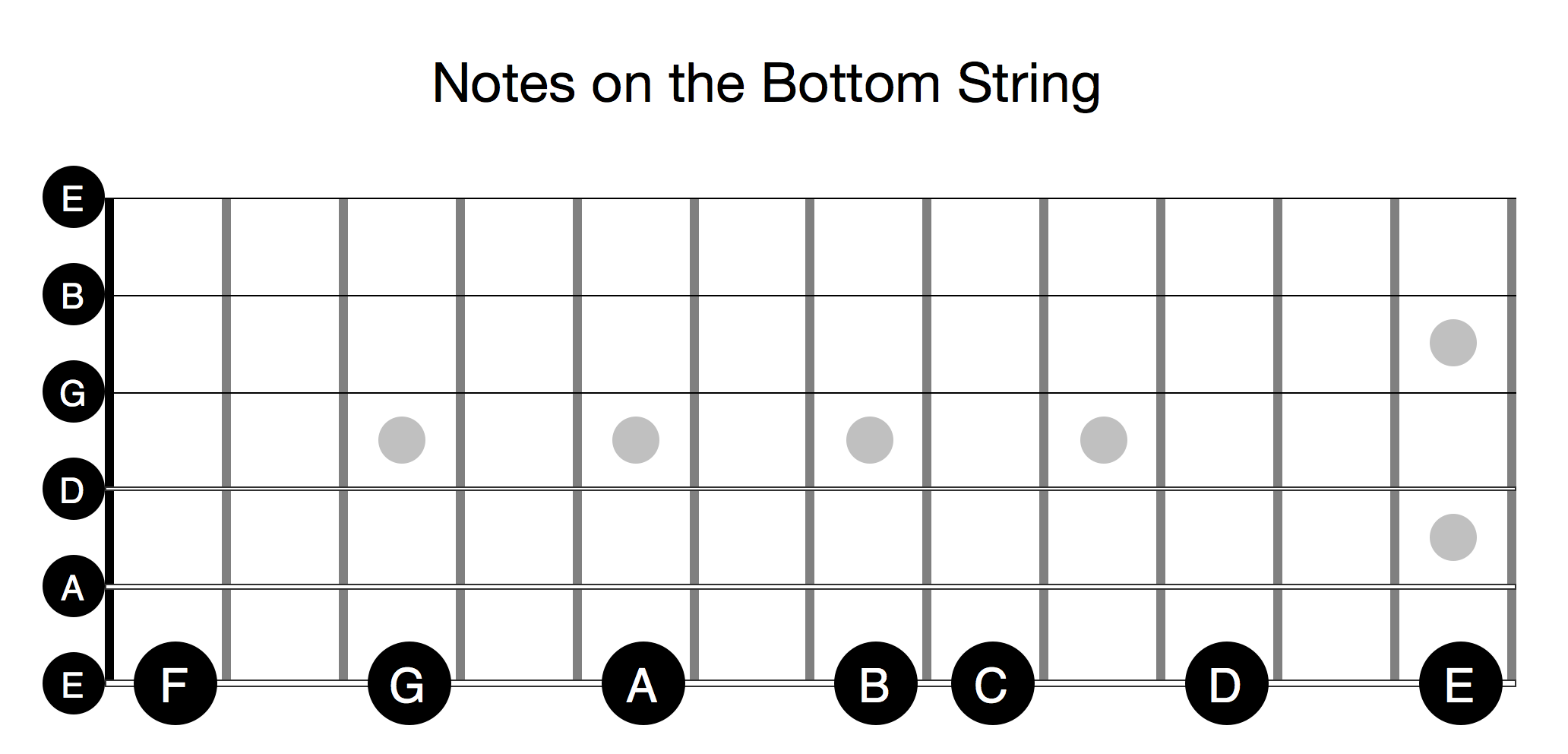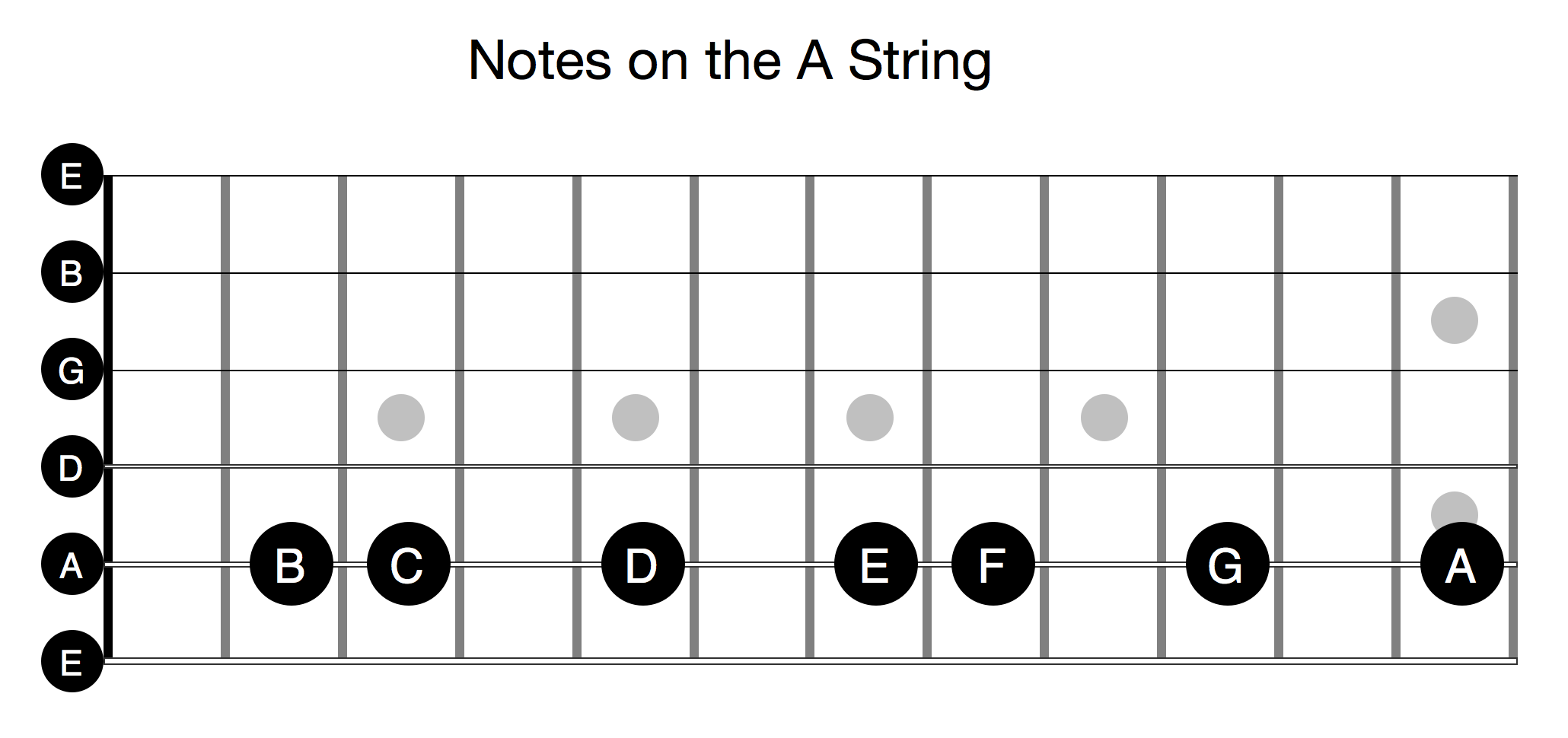What's one skill that you can guarantee will help your guitar playing, theory knowledge and understanding of your instrument no matter what style you play?
Learning the fretboard.
So why do so many technically great guitarists struggle to name the notes on the fretboard?
Because memorising stuff sucks. It's not much fun, requires discipline and in the short term it will slow down your playing.
But fear not, lazy guitarists! I've got a fool-proof system for learning the fretboard in its entirety, and I'm going to share the first 5 steps with you today.
Step 1: Learn the bottom and 5th string in 3 chunks.
The bottom string, (in standard tuning) is tuned to E. Bonus - so is the top string, so all the note positions are the same across both strings. You're really learning two for the price of one!
The first chunk to learn is E, F and G, which are played on the open, 1st and 3rd frets respectively.
Play it backwards and forwards, inside out, saying the names of the notes out loud as you play them.
The next chunk to learn is A, B and C, which are played on the 5th, 7th and 8th frets respectively. Again, play them backwards, forwards, and jump between both chunks.
Finally, D and E are located on the 10th and 12th frets respectively. Easy!
Just stick to this string for as long as you need to memorise it. By memorise, I mean "when I play the note, I know the name instantly". All it takes is 5 minutes of effort each day and you'll know it in no time.
Once you've done this, you can repeat the process for the 5th string.
Step 2: Use octaves to learn the 2nd, 3rd and 4th strings
Playing octaves will make it much easier for you to learn the notes on the next few strings, as you can relate back to the strings you've learnt in step 1.
For example, lets say I want to know what note I'm playing on the 7th fret on the 4th string. Easy - play the octave below by moving back two frets and two strings and you'll be on the 5th fret bottom string. If you've done Step 1 enough, you'll know that it's an A, which means the 4th string 7th fret is also A!
This can be a massive shortcut for learning the other strings, but longer term, you'll want to memorise them as well as you've memorised the bottom two strings.
Step 3: Focus on the next 12 frets
Now, we've only focussed on the first 12 frets of the guitar so far. But what if you're shredding?
Easy - if you play a note above the 12th fret, just jump back 12 frets and you'll be on the same note an octave lower.
Using this trick, it shouldn't take you long to repeat Step 1 and 2 for the second half of the fretboard. It probably won't take you very long.
Step 4: Test yourself with random notes (including sharps and flats)
Pick a random note. Play it, then say the name of the note out loud.
The aim is to get the thinking time reduced to pretty much zero, so in future you can just play a note and know exactly what it is without any mental calculations.
Now, think of a random note. Try to find it on every part of the fretboard. You have 150 total notes you can play on the guitar (assuming you have 24 frets), which means you should be able to find between 10-13 of the same note on your fretboard.
Just 5 minutes of this each day and you'll know the notes in no time.
Step 5: Use this knowledge for good (or evil)
Just knowing notes on the fretboard is nothing more than a cool trick.
The real skill is in using this knowledge to improve your playing.
How you use these notes will depend on what you're working on and the styles you play, but here's a list to give you some inspiration:
- Play through your power chord shapes all over the guitar. They should be easy to find now!
- Play through all of your barre chords. Again, they should be very easy to find now!
- Solo in any key you want to, using any scales you want to: You guessed it, knowing the root notes means you can pick any key you want
- Sweep arpeggio or triad shapes
- Tapping patterns
Everything now has a musical context, because you'll know which notes you're playing. This will tell you which chords, which scales, which chords you're playing in a whole new way.
This guide is just the beginning in your quest to fully understand the fretboard, but if you'd really like to take your guitar knowledge and skills to the next level, book yourself in for a master guitar lesson in ringwood or ask your questions in the comments below!




